We store our high-quality yarn in this state-of-the-art facility and disassemble any imperfect products to reuse the yarn.
The Yarn Purchaser liaises with our Design department, Customer Service team and Planning department to ensure we have enough yarn for our internal and third-party orders. Four Yarn Store Operators run the yarn store – locating and distributing yarn for our knitting and linking departments, among others.
The Yarn Store uses a modern storage system – a Kardex machine- to collect and distribute yarn. This building is only three years old, with the new equipment replacing our previous rack-shelves system. Operators must be computer literate, as they will programme the machine’s automated ‘goods to man’ system.
In the Yarn Store’s reclaim area, we deconstruct imperfect products and reclaim the Cashmere or Merino Wool so it can be used in a valuable way. It’s inevitable, working with natural fibres, that some products will have minor imperfections when they come from the knitting machines. If it's impossible to carry out an invisible mend, we reclaim the yarn and reuse it. Reclaiming must occur at the greasy stage of production, as once the wool is clean, it's more challenging to work with. Wool that can't be reclaimed becomes waste and is sent to a waste merchant. 85% of wool from imperfect products is reclaimed each week, and the other 15% goes to a waste merchant.
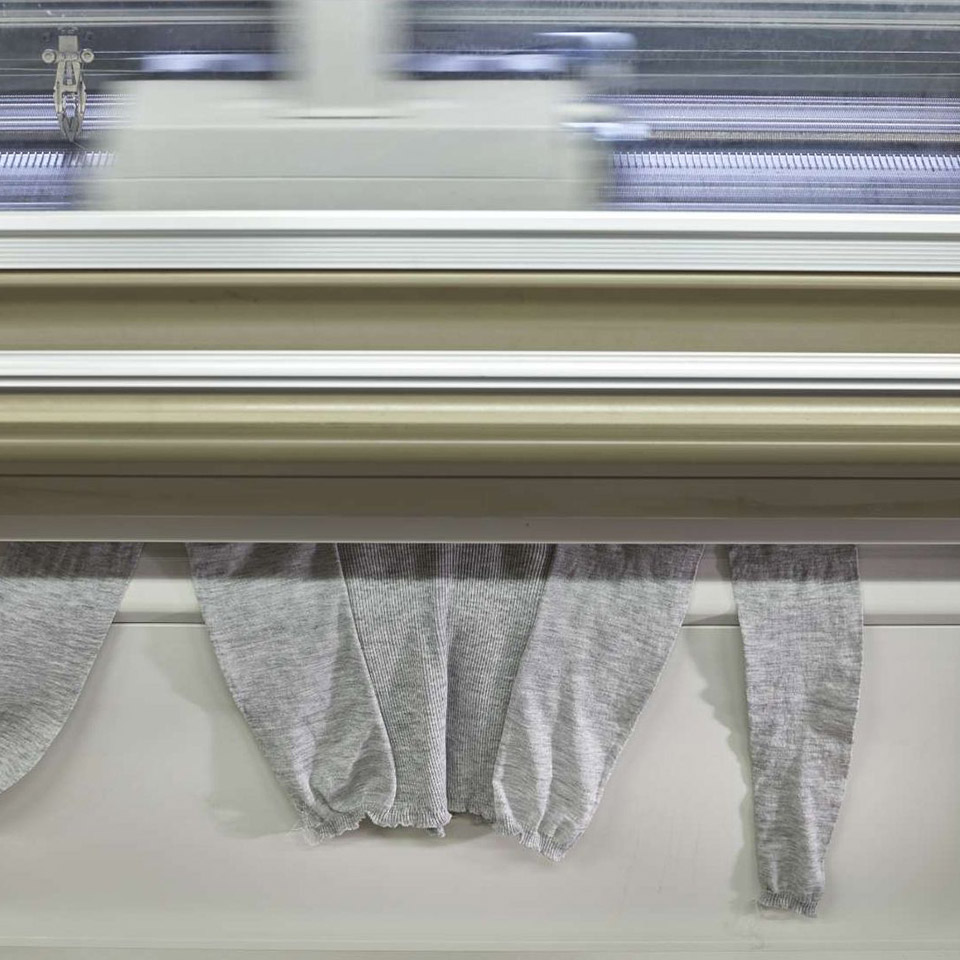
Members of the team in our Knitting Department request yarn from the Yarn Store and use the information provided by the Planning department to plan products onto the machines. We have 12 Shima Knitting Machine Operators, five Glove Knitting Operators and two Sock Knitting Operators in this department, operating on a treble shift pattern. We utilise different machines for different yarns; for example, fine yarn requires a 12 or 15-needle machine, mid-range yarn an 8-needle machine and heavier gauge yarn a 3 or 5-needle machine. We also have six sock knitting machines, using a circular knitting function.
Training for the Knitting Department is done in-house, with experienced craftspeople partnering with new employees to pass on their knowledge.
Under the umbrella of the Knitting Department, we also have two Machine Cleaners and three Machine Mechanics who work continuously across all departments in the mill.
There are also two Knitting Supervisors and two Knitting Managers.
DESIGN
This department currently has three Designers and two Design Administrators. Our design team considers colours, new knitting technology, and new stitch structures, tying in with programming and the technical side of our business. All aspects of product design are considered here, including details such as trims, buttons, and zips. Our Designers also work closely with our customers to determine their requirements.
The Design department also operates in a relatively new area with high ceilings that create a light and airy working environment. We have a team of two working with an Apex machine to help ensure sustainability and efficiency, creating virtual samples for products to avoid producing samples for everything. The technology makes authentic examples of what a design will look like, and colourful designs like a fair isle sweater can be tweaked at an early stage in development, if necessary, without creating waste. This also allows us to look at other ways of improving efficiency, such as the time required to create a product on the knitting machines.
PROGRAMMING
We have ten Shima Programmers and two Knitting Technicians who work out details such as the shapes of bodies for sweaters. Our Sample Room team comprises six or seven people, one is currently working towards a Modern Apprenticeship, and two are training to be Modern Apprenticeship Assessors.
COSTING
Everything from the cost of yarn to the time taken to make items is considered in this department, working closely with the sample room to find the most efficient manufacturing methods. Employees in this department measure products to check they are exactly as they were intended to be at the sample stage – there can be a lot of back and forth on a design before it is ready to go through production.
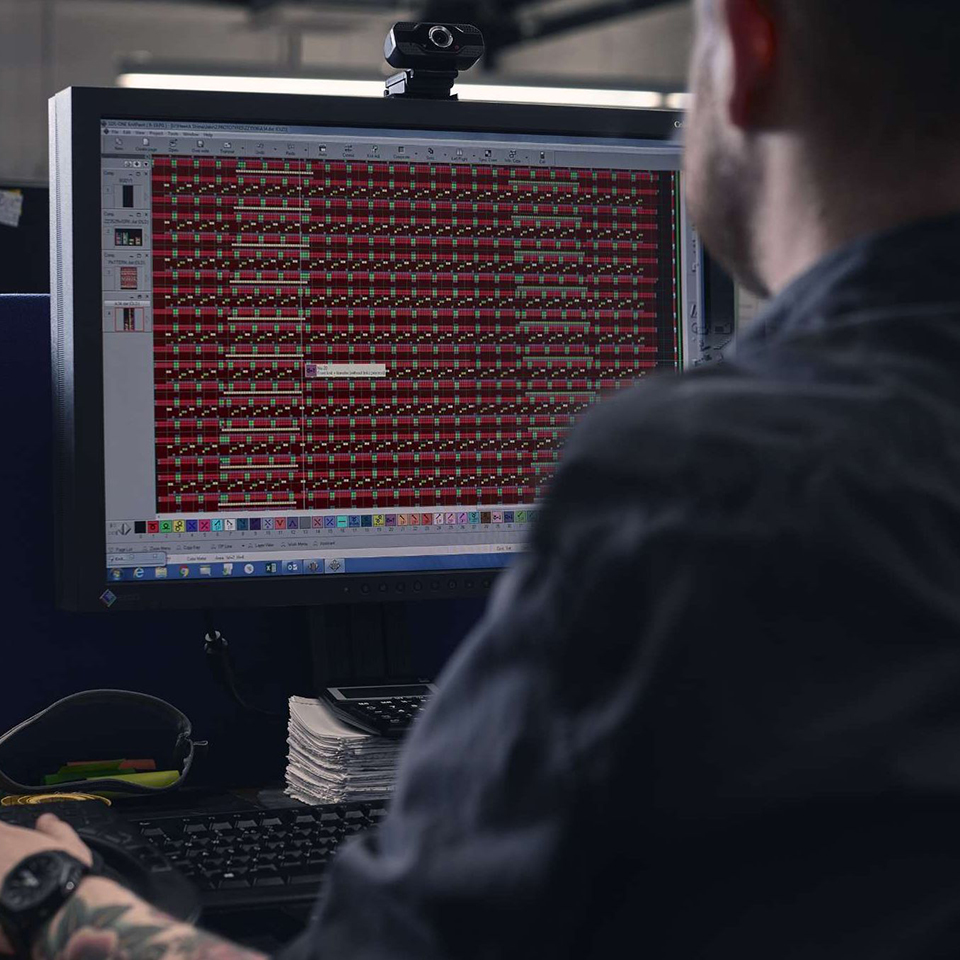
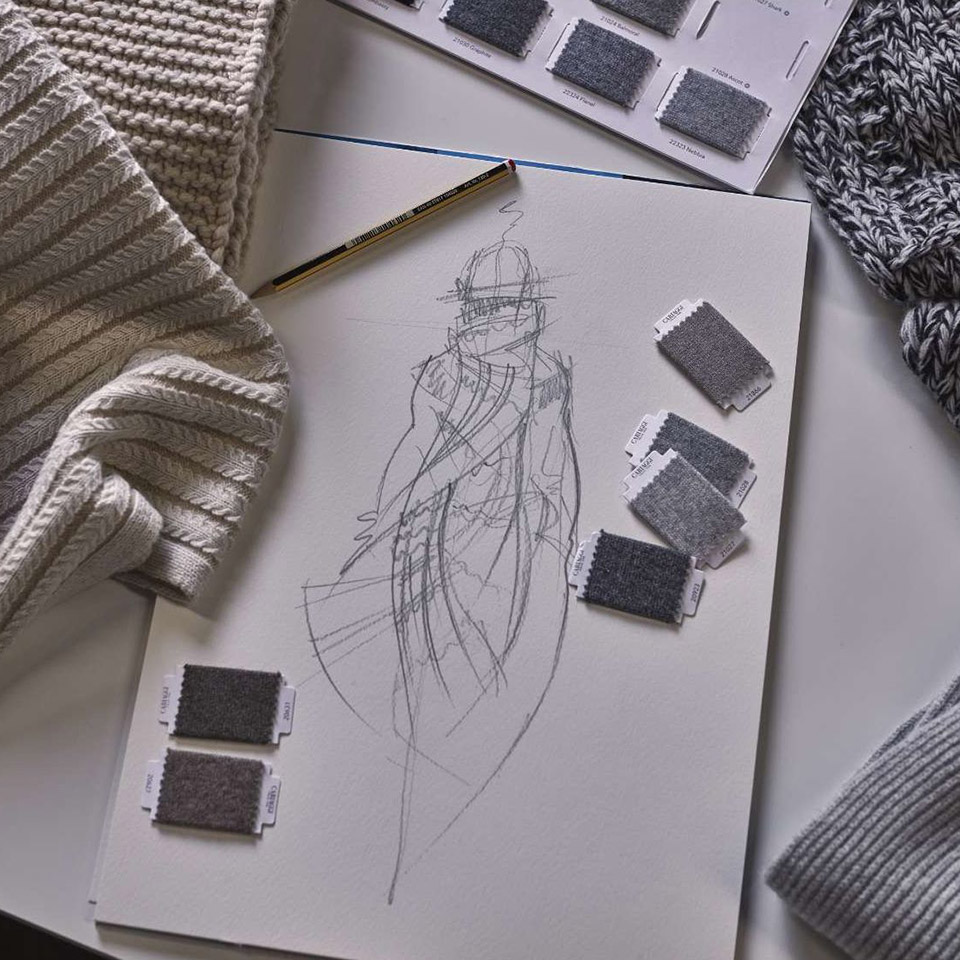
Garments that are made in separate parts come from the Knitting department to Linking. Each individual here works one machine at a time and links the components of the garment together. There are different gauges of machines for different yarn thicknesses, and the process requires many hand skills. This is a specialist area where dexterity, attention to detail and great vision are key.
This is where a sleeve, knitted as a flat piece of fabric, is joined together.
This is the process of securing the loose ends of yarn naturally occurring at the cuffs and ribs of a garment and strengthening the shoulders and stress points.
Here, we check for faults that may have occurred through our processes before the washing stage. When a garment is oiled, it retains strength for knitting; once washed, it becomes soft and fluffy, so harder to knit with.
We check the required measurements have been met and carry inspections according to product type. For example, we would check the welt, and inside shaping of a hat, and for a couture product, we carry out a full inspection, cross-referencing with a gold seal sample as a benchmark. We use Garmatic machines to stress test seams and perform a complete visual inspection. If an individual fault such as dropped stitch is found, the garment is passed to Mending for repair.
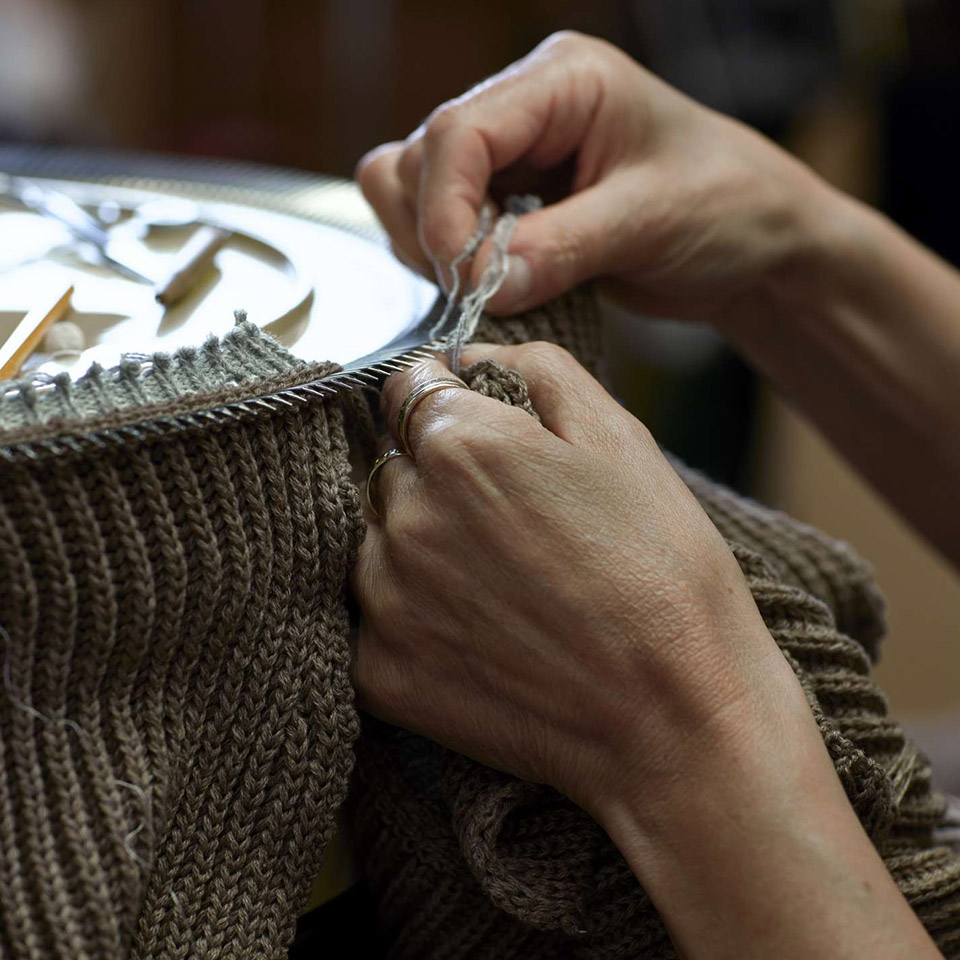
Garments meet up with their trimmings, such as collars and strapping, at the weigh in area and all the components are washed together. We code yarn with a batch number so that all the parts are knitted with wool from the same batch, so we can maintain consistency. We have two people working in this area.
If something has been knitted heavier than planned, it will be picked up at this stage. We store all the trimmings, match them up and put them into load sizes for washing. Spotting issues pre-wash means the yarn can be reclaimed and repurposed if necessary.
A lot of technical skill is required in this department, putting together batches, washing similar colours together and using the right amount of washing detergent. The team here look at previous wash times for identical or similar products. A few seconds two long when washing can significantly impact the finish for a garment, as over milled items won't be as soft, fluffy or light. Some customers add acid to improve the hand feel of particular products. Three employees work in this section.
The Paris Press or Flat Press process involves getting the garment to the correct size by looking at the specifications and using the press machinery. There are three shift patterns in this area.
Hand sewing is about the specific placement of stitches and invisible stitches. This is a hand skill required by many of our couture customers, involving a lot of detail and hand application. More experienced staff work on specific customers while newer employees are trained up before working on these precision pieces.
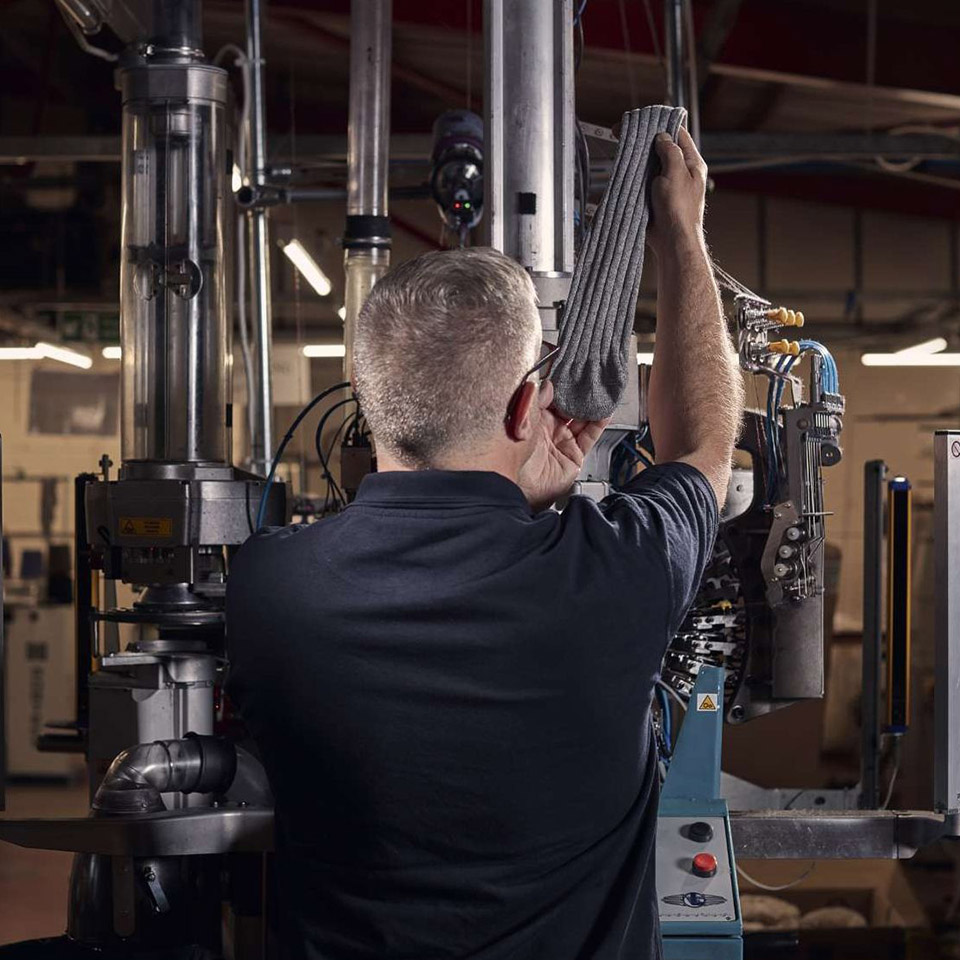
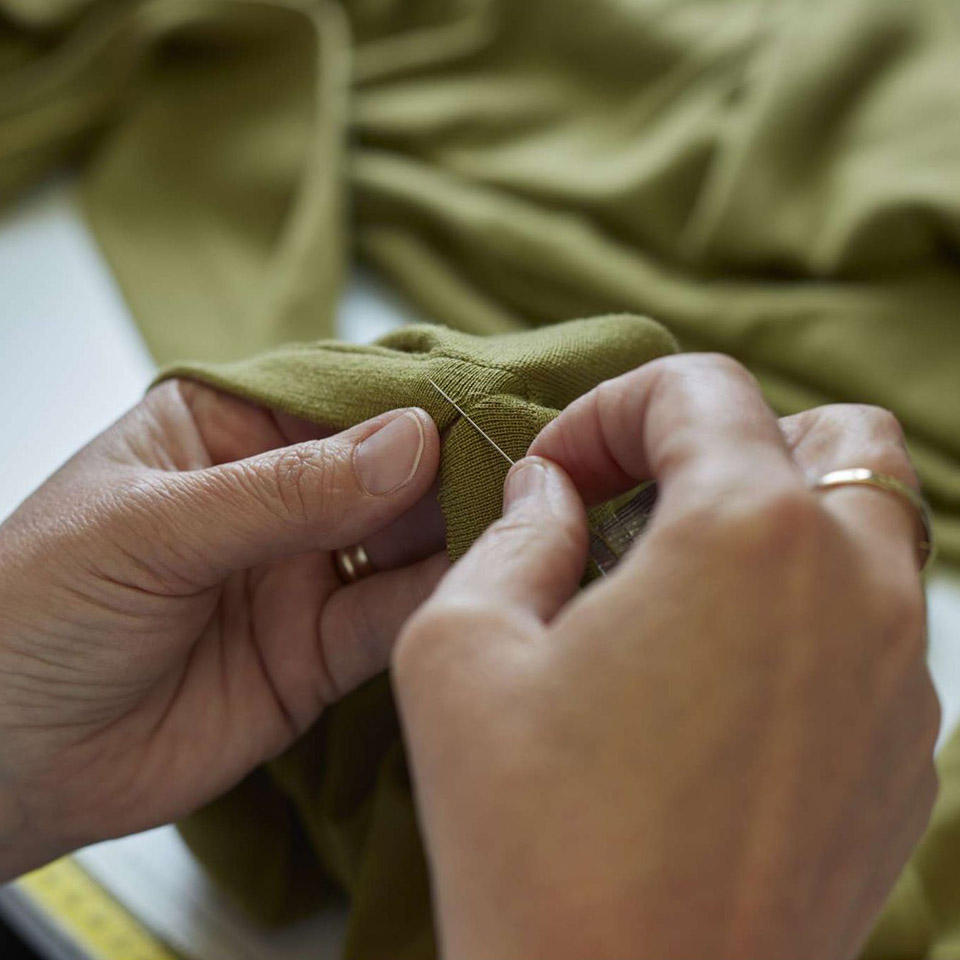
A 'process mend' is a natural part of manufacturing, for example, neatening up cuffs, where threads will be visible when a garment comes off a machine. These are mended back into the garment by hand.
Checks happen here to ensure everything is perfect before going to the Warehouse.
Our customers have their own requirements for labels, swing tickets and care instructions, which we take care of at this stage. We receive factory folded garments and check the customers’ criteria for folding, and a final visual check is done on the garment. If tissue paper is required or spare buttons are to be included, this also happens at this point. Finer gauge products require extra tissue and thicker bags due to their delicate nature. We then scan the products and book them into the Warehouse. We try to ensure all garments going to the Stockroom are neatly presented to the same consistently high standard.
Warehouse functions include picking, packing, dispatching, folding and bagging. There are 20 staff in the Warehouse - a separate building where we keep the finished stock. The team here includes the Warehouse Manager, two Warehouse Supervisors and a team of taggers, folders, baggers, pickers and packers. We use a handheld scanner system to pick, pack and dispatch.